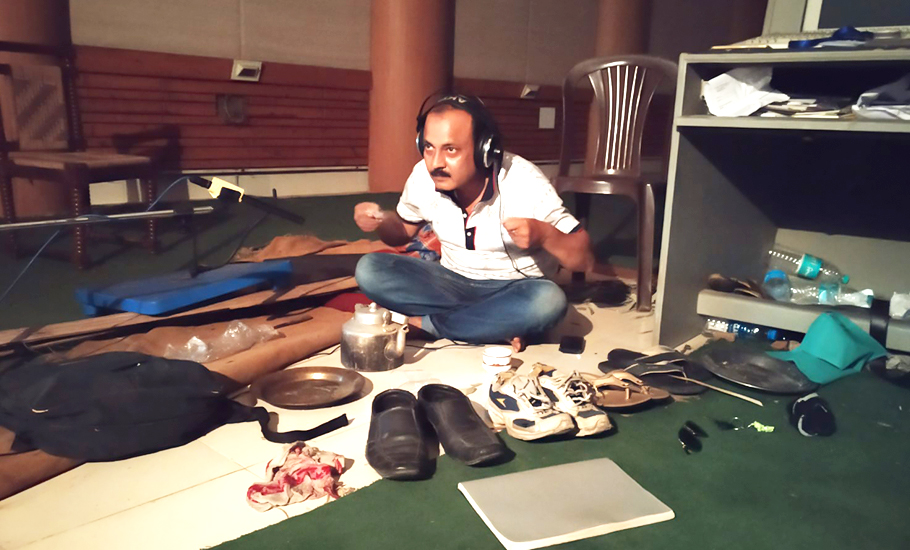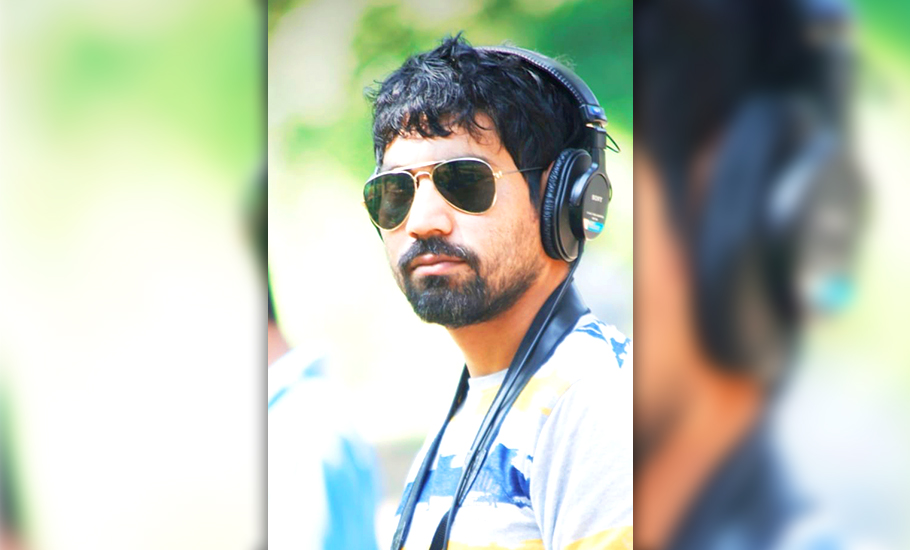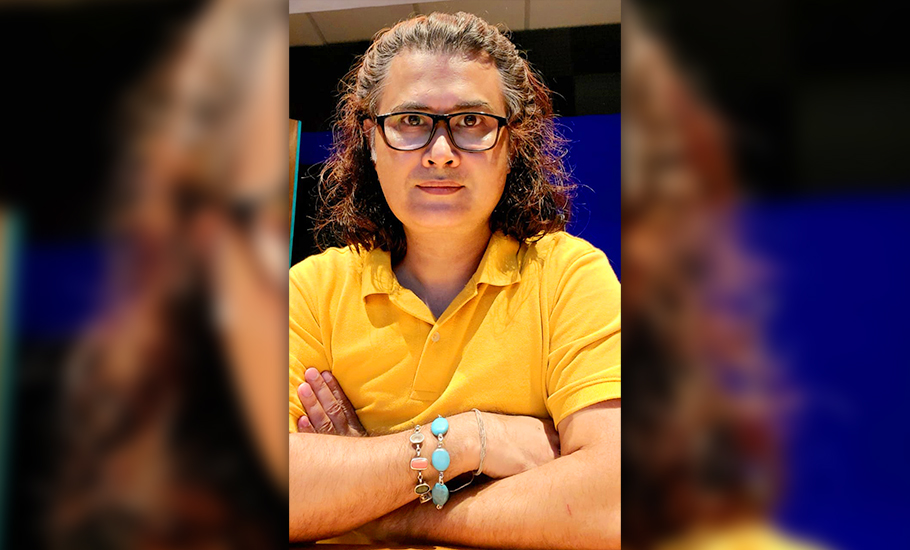
- Home
- India
- World
- Premium
- THE FEDERAL SPECIAL
- Analysis
- States
- Perspective
- Videos
- Sports
- Education
- Entertainment
- Elections
- Features
- Health
- Business
- Series
- In memoriam: Sheikh Mujibur Rahman
- Bishnoi's Men
- NEET TANGLE
- Economy Series
- Earth Day
- Kashmir’s Frozen Turbulence
- India@75
- The legend of Ramjanmabhoomi
- Liberalisation@30
- How to tame a dragon
- Celebrating biodiversity
- Farm Matters
- 50 days of solitude
- Bringing Migrants Home
- Budget 2020
- Jharkhand Votes
- The Federal Investigates
- The Federal Impact
- Vanishing Sand
- Gandhi @ 150
- Andhra Today
- Field report
- Operation Gulmarg
- Pandemic @1 Mn in India
- The Federal Year-End
- The Zero Year
- Science
- Brand studio
- Newsletter
- Elections 2024
- Events
- Home
- IndiaIndia
- World
- Analysis
- StatesStates
- PerspectivePerspective
- VideosVideos
- Sports
- Education
- Entertainment
- ElectionsElections
- Features
- Health
- BusinessBusiness
- Premium
- Loading...
Premium - Events

The sound void: Where have all Foley artistes of North East gone?

Cinema in the North East is currently witnessing an exciting metamorphosis. The rise of independent filmmakers, coupled with the proliferation of Over the Top (OTT) platforms and access to advanced technologies, has opened new vistas for the region’s cinema. But amidst this cinematic revolution, filmmaking in the region is grappling with a long-standing issue; an issue, which an...
Cinema in the North East is currently witnessing an exciting metamorphosis. The rise of independent filmmakers, coupled with the proliferation of Over the Top (OTT) platforms and access to advanced technologies, has opened new vistas for the region’s cinema. But amidst this cinematic revolution, filmmaking in the region is grappling with a long-standing issue; an issue, which an average cinephile might find insignificant, but when observed closely, is a glaring void — the dearth of Foley artistes.
Filmmakers lament that the scarcity of Foley artistes in the region is not only hindering their creative process but also compounding the financial burden of the producers forcing them to outsource this crucial element of sound design.
“The scarcity of Foley artistes is affecting the quality of post-production. There are only a handful of them here and they are mostly concentrated in Guwahati, Assam. So, we either count on them or go to Kolkata and Mumbai to complete our job. I have been urging fellow filmmakers to learn the art so that we can do the post-production in our state and not dent our pockets by outsourcing it,” says National Award-winning filmmaker from Manipur, Oinam Doren, whose acclaimed docu-film, Songs of Mashangva (2010), showcased the musical heritage of the Tangkhul Naga tribe.
The invisible art
So, what does a Foley artiste do and why it is important in a film?
“Foley artistes recreate real-time sounds that are in sync with those made by performers while filming scenes, during post-production in a studio. The sounds they create, however, are different from pre-recorded ones found in audio effect libraries, such as explosive noise of gunfire and rumbling of thunder, among others,” says Amrit Pritam Dutta, an Assamese National Award-winning sound designer and member of Academy of Motion Picture Arts and Sciences (Oscar) and Motion Picture Sound Editors (MPSE).
For Debajit Gayan, another National Award-winning sound designer from Assam, Foley artiste creates “seemingly insignificant” symphony of sounds that breathes life into scenes and adds a touch of essential realism to them. “Picture a movie scene with three actors in a room – one seated on a wooden table donning leather shoes; another flipping through a newspaper on a couch; and the third pacing restlessly on a marble floor in sandals. As the first actor stands up and approaches a window, the second folds the newspaper, and the third halts and lights a cigarette, a myriad distinct noises accompany their movements. This is the work of a Foley artiste to recreate these incidental sounds,” he further explains.
Foley art is no child’s play and requires a high degree of concentration and creativity. Dutta explains that since the job involves recreating every sound that is heard on every frame of a movie, Foley art remains a time-honored technique that is irreplaceable when it comes to creating a rich and immersive audio experience for a film. “A Foley artiste’s work is directly proportional to the number of characters in a film and the sounds they create while filming each scene. Sometimes, an artiste needs to walk about 25 kilometres just to create sounds of footsteps of all the characters while keeping in mind their distinct walking style,” he informs, explaining the vitality of the work.

Props, which can range from celery stems to staple guns, are the main weapon used by these artists to create incidental sounds. “Different types of films require different types of Foley work. A fight scene in a commercial cinema, for example, will not require sound of realistic punches, whereas one in an offbeat, parallel cinema will. I recall once hitting my arms with the palm of my hand to create sound for the latter,” says Bijoy Kumar Nath, a sound engineer who has done Foley work in over 75 films in North East. He goes on to say that above all, a Foley artiste needs to be imaginative. “Once, we had to break loads of plywoods at once to create the sound of elephants destroying a citadel in one of director Manju Borah’s documentaries. In another, we had to slap a marble floor hard with rubber sandals to create the sound of a slap,” he recalls.
The exodus
With their work named after Jack Foley (1891-1967), an American sound effect artiste, these unsung heroes of filmmaking are a rare species in the North East. With a vibrant cinematic legacy dating back to the early 1900s, with the release of Joymoti in 1935, Foley art, which is a vital element of the filmmaking process, never really took off in the region.
Gayan informs that when he first started out after finishing Audiography and Sound Engineering from Guwahati in 2008, filmmakers in the North East didn’t pay much heed to the art form. “Until recently, the dialogue play and music were the most essential aspects of a film. The only sound effects they occasionally used were the rhythmic pulsations of vehicles and creaky doors. The few northeastern filmmakers who did use Foley that time did so either at the LV Prasad Lab in Chennai or by bringing these artistes to Assam. Even today, there are hardly any Foley artistes in the North East,” he says.
One of the major causes of this dearth can be attributed to the exodus of trained professionals to larger cities in quest of greener pastures.
“There is a dearth because most professionals have left the region due to a lack of opportunities and recognition. And you can’t blame them as in the big cities the work flow is better, people comprehend the art well and give them the recognition they deserve,” says Pradip Kurbah, a Meghalaya-based National Award-winning director.
Kurbah further adds that individuals in the North East’s film fraternity are also sceptical of the region’s local talent. “We have this preconceived notion that Foley artistes in big cities will perform better than those in our backyard. This is an erroneous assumption. I, as a filmmaker from the North East, am attempting to engage Foley artistes from the region because I believe that is the only way to help them get work and gain recognition,” adds the director whose Khasi film, Iewduh bagged the Best Audiography Award at the 67th National Film Awards.
The make-do troubleshooters
Today, the scarcity of these professionals has assumed the form of a rare bird sighting in the region, elusive and difficult to come by, forcing sound recordists and live audio engineers to double up as them whenever the need arises.
Babul Das, a sound recordist at Jyoti Chitraban, the North East’s first and only film studio in Guwahati, has been doing this for years. “Till late 2000, Assamese cinema was reliant on Foley artistes from outside the region, primarily from Chennai. As a sound recordist, I had the opportunity to carefully observe these artistes when they were brought to do Foley in our studio. There is no shame in admitting that I and a few others, who now do the majority of the Foley work for Assamese cinema, learned the trade’s tricks from them,” says the 49-year-old. Till date, Das has worked as a Foley artiste in over 200 films in the North East.
Julius L Basaiawmoit, a live audio engineer and proprietor of Prodigy Studio in Shillong, has a similar tale to tell. “Initially, the directors and producers in Meghalaya wouldn’t even have a designated sound technician in the crew. They would prefer to edit and place whatever audio they deemed necessary themselves. Since I had a Post Graduate Diploma in Sound Recording and Reproductions from the Satyajit Ray Film and Television Institute (SRFTI), a few would approach me to do Foley. Since there were no dedicated Foley artistes and a designated team, I remember involving my family members to assist me. Even today, the scene in my state hasn’t altered much,” says Basaiawmoit, an established live sound engineer in the region.
Doubling up as a Foley artiste in the North East presents a unique set of challenges, as artistes often find themselves bringing their homes to the studio. Das recounts how during recording sessions, the studio would frequently resemble his kitchen. “I would bring utensils, rice bags, a mortar and pestle, pressure cookers, and various other kitchenwares to do Foley,” he says. While this arrangement is convenient for Das, who resides in a quarter within the studio premises, it is not a viable option for most artistes.
Lack of studios and awareness
The absence of specialised Foley studios in the region further adds to the challenges faced by artistes in North East. Gayan points out, “Although we use sound recording studios for Foley recording in the North East, it is not the ideal way to do it. One must understand that sound recording studios and Foley studios are two distinct studios and have different setups. Even look-wise, a Foley studio with all the props would often resemble a storehouse.”
The dearth of Foley studios in the North East is not an isolated issue. It is symptomatic of a larger problem that stems from a lack of budget allocation for sound design and a general disregard for the importance of Foley art. Dutta observes that in established industries outside the North East, a budget of Rs 5 to Rs 10 lakh is often set aside solely for the sound design of a film. “In stark contrast, in the North East, filmmakers are expected to create an entire film with that same budget,” he informs.
Doren adds that recognising the work of Foley artistes is still a far cry for the general public in this part of the country, as the majority is unaware of what sound design for a film entails. “The sound guys operate behind the scenes and are rarely in the spotlight, so they are invisible to the audience. If forced to watch a movie without real-time sounds, I think people will recognise the intrinsic value of Foley artistes,” adds Doren.
The scenario is worst in other states of the region. Tiakumzul Aeir, a filmmaker from Nagaland, rues not only the dearth of Foley artists, but also the state’s overall filmmaking climate. Calling even the idea of using a Foley artiste in post-production a far-fetched notion in the state, Aier informs that filmmakers in Nagaland are working without the basic amenities. “Let alone Foley, we don’t even have proper lighting and cinematography equipment. The majority of filmmakers in Nagaland work on commissioned projects such as documentaries rather than feature films. The state’s scenario has become stale,” he laments.
Light at the end of the tunnel
The advent of digital filmmaking however has provided the much-needed shot in the arm for Foley art in the North East. Though miles to go, many believe that with digital cinema placing a renewed focus on sound, Foley art has managed to garner some recognition. “When I was shooting my first film (Kotha Nodi) in 2014, my production manager was astounded to hear that I plan to sync sound while shooting. This was the norm around the world back then. From those days to now, there has been a sea change in Assamese filmmakers’ attitudes towards sound in general, and sound designing in particular, which is great news for Foley art and this has been made possible by digital filmmaking,” says National Award-winning director from Assam, Bhaskar Hazarika.
Speaking of the technical aspects, Das says that digital filmmaking offers more control and precision over sound. “Unlike on celluloid, sound can be recorded separately from video footage in digital filmmaking, allowing for greater flexibility in post-production. As a result, Foley is now regarded as an important component of filmmaking, and is thus valued by both filmmakers and audiences,” he adds.

Many may bemoan the North East’s dearth of infrastructure for developing technical talent, but some believe that better times are just around the bend. Rima Das, whose film Village Rockstars (2017) swept the 65th National Awards, believes that the current environment for filmmaking in the region is very fertile, and it’s only a matter of time before appropriate infrastructure to support technicians is in place. “The majority of filmmakers in Assam are making films without regard for the consequences; this is a very positive trend. In such a scenario, there is plenty of opportunity for local talent (including Foley artistes) to break into the film industry. And, of course, suitable infrastructure is required to nurture them, which I am confident will ultimately sprout,” she says.
If the region is to develop excellent Foley artistes, it must also seriously consider the need to increase awareness about the art. And, in response to this problem, Gayan proposes a rather novel solution. “Why not make short films about Foley artistes’ behind-the-scenes (BTS) efforts as part of a film’s promotional campaign and screen them in technical institutions? As a result, aspiring audio technicians will learn about the importance of Foley art in filmmaking,” he adds.
